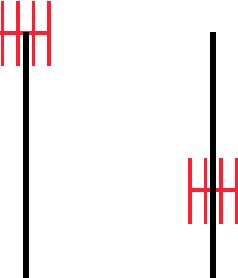
Hi, I am Tony I0JX
A VHF & UHF Yagi system with horizontal and vertical
polarizations
Along more than 40 years of hamming I have not develop a really strong interest for the 2-meter and 70-centimeter bands (and the higher ones either), apart from satellites and sporadic-E.
When the AO-10 and AO-13 satellites were active, I had quite a complex system having the possibility to switch four polarizations on each band (linear horizontal and vertical, circular left and right). In my opinion keeping that system just for the low-orbit satellites that are now available would not make sense, so I decided to take it down and put up a more modest system, though still giving me the possibility to operate on the two bands with either horizontal or vertical linear polarizations. Having both polarizations is important to maintain the possibility of working fixed stations (usually using horizontal polarization) as well as mobile stations and far-away repeaters (using vertical polarization).
Another requirement for me was to have all antennas (H&V for 2 m, H&V for 70 cm) on a rotating mast that I had used in the past for other purposes ), which is fairly strong but not extremely strong.
A problem to be faced is how to mount vertical-polarization antennas on a vertical mast which, being parallel to the antenna elements, may cause a gain loss and anyway distort the antenna pattern, with impacts that are difficult to predict. This problem occurs even if the vertical antenna is put at the top of the mast; worse if it is fully crossed by the mast

Using a non-conductive mast would not solve the problem, because the coaxial cable feeding the antennas would cause detrimental effects similar to that of the mast.
A common solution to the problem is to offset the vertical antennas from the mast, at least half a meter away; this requires having an extra horizontal mast, bolted to the vertical mast, that bears the two vertical antennas (2 m and 70 cm) at its extremes. The horizontal antennas can then be put on top (in picture below, you are now looking into the antennas from their back).
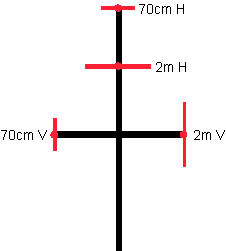
A way to reduce the total number of antennas would be to use combined antennas, i.e. those having 2 m elements on one plane and 70 cm elements on the orthogonal plane, with a common boom. An example of such antenna is the mod. 20889 of Tonna, which has 9 elements on 2 m and 19 elements on 70 cm, all on the same boom. The mast-to-boom clamp is designed so that all elements are at 45 degrees with respect to the supporting mast. So, using two such combined antennas and a Y-shaped mast extension it would be possible to realize the desired system using only two antennas. By the way I have verified, with EZNEC, that the interference caused by the 45-degree mast is not too significant in terms of antenna pattern distortion.
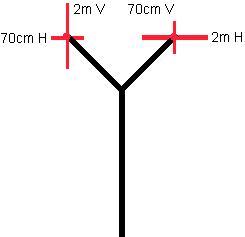
WARNING: the square boom of the Tonna antenna mod. 20899 is not very robust (it has a 1-mm wall) and, if you tighten the boom-to-mast clamp screws as required to keep the boom straight, the boom will buckle. My solution was to insert in the boom a 15-cm long solid inlet having a square-section of 18 mm x 18 mm that precisely fits the boom. I could easily find a plexiglas square bar of that size, which is rigid enough, but if you find a metal one it would be even better.
The following picture shows the plate I used to support the 45-degree mast extension (with some rain drops on it).
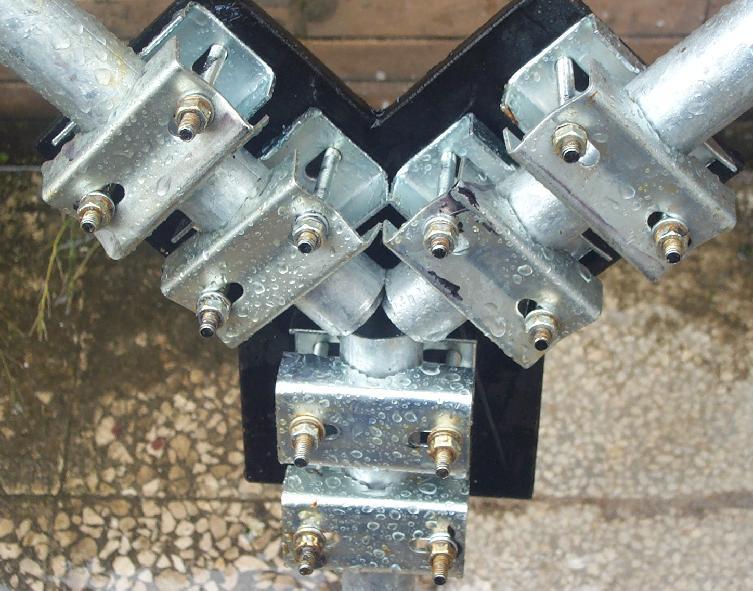
In my case I already owned two Yagi antennas for 2 m (Tonna mod. 20811, 11 elements) and 70 centimeters (Tonna mod. 20919, 19 elements), so I decided to only buy one combied antenna and then build the system shown below.
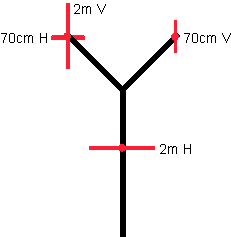
The following picture shown the three antennas mounted on the rotating mast.
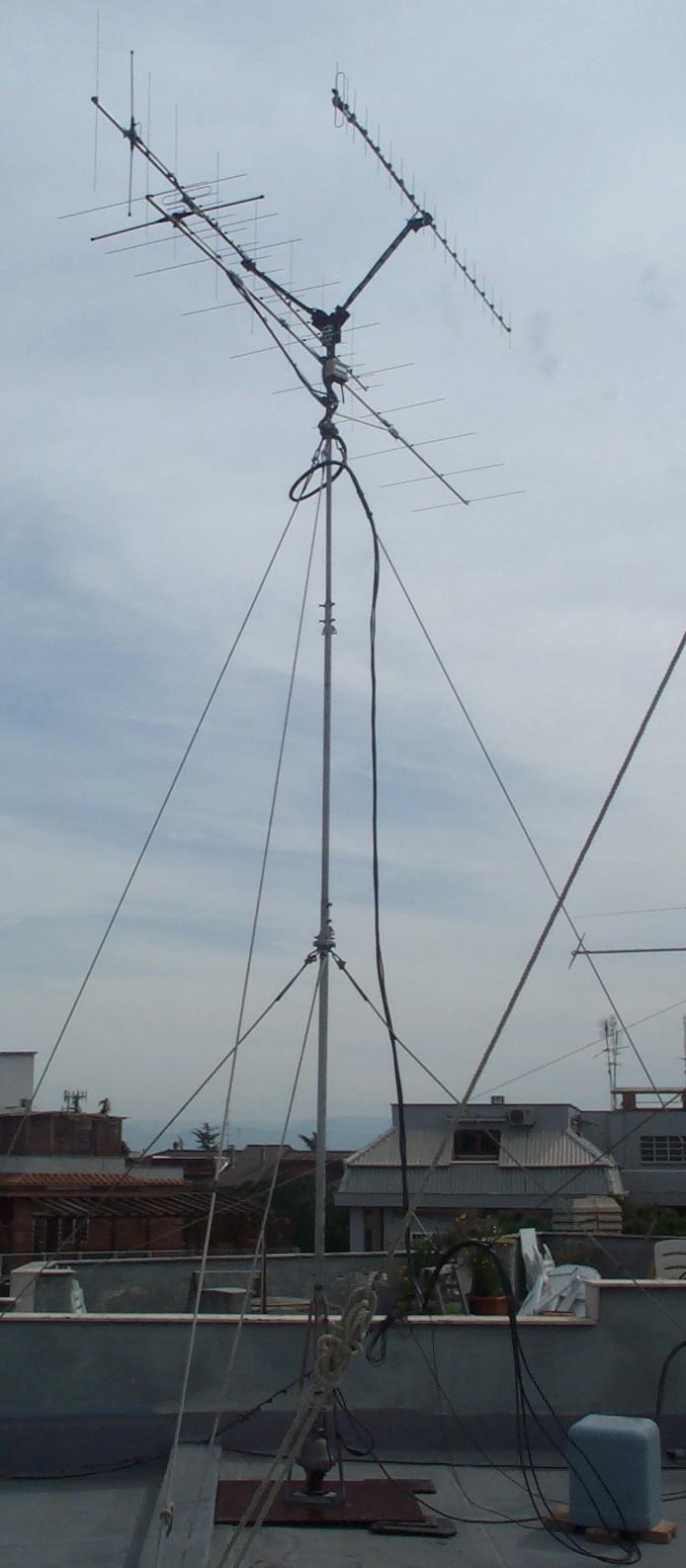
At the bottom of the mast you can see an Hy-gain CD-45 rotator and, on the right-hand side, a box, supported by four bricks, containing two coaxial relays for polarization switching.
Two Yaesu GS-050 thrust bearings are used to secure the guy wires to the rotating mast.
A Dressler EVV-700 switched 70 cm preamplifier can be seen close to the 2-m horizontal Yagi boom.
Coaxial cable is Ecoflex 10.
Return to the I0JX home page